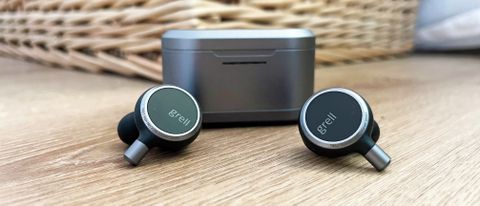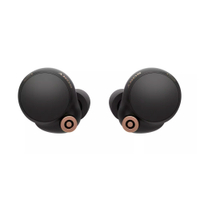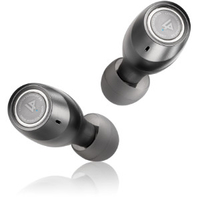TechRadar Verdict
The Grell Audio TWS/1 are here to shake up the big names in wireless earbuds, and they succeed. They sound fantastic, and we can easily forgive slightly weak noise cancellation when the music is this good.
Pros
- +
Direct, positive and enjoyable sound
- +
Good spec and battery life
- +
Multiple control options
Cons
- -
Far from the best noise-cancellation around
- -
Relatively big and heavy
Why you can trust TechRadar
Grell Audio TWS/1: one-minute review
The Grell TWS/1 true wireless earbuds are the first product from the fledgling brand, named for its found, Axel Grell. People who take a proper interest in the headphones market (which means people like us, of course) have probably heard the name before, especially those of us who take Sennheiser as seriously as the brand deserves. Don’t fret if you haven’t heard the name before, though – it’s enough to know Axel Grell knows exactly what he’s doing.
The score of this Grell Audio TWS/1 review is proof. Battery life is significant, specification is on the money, build quality is reassuring and, best and most importantly of all, sound quality is profoundly competitive with the best wireless earbuds from any company.
No, the TWS/1 don’t do as complete a job on blocking external sound as some alternative designs from higher-profile brands. And no, they’re not the most discreet true wireless earbuds (or charging case) you ever saw. But if what matters most to you is the sound your true wireless in-ear headphones can deliver, you need to put the TWS/1 on your shortlist. Quite near the top.
Grell Audio TWS/1: price and release date
- $199 / £179 / AU$299
- Released in May 2022
The Grell Audio TWS/1 true wireless in-ear headphones are on sale now, and they’re priced at £179 or so in the United Kingdom. That means $199 in the United States and AU$299 in Australia. Eurozone customers are looking at €199 or thereabouts.
You’re spoiled for choice where products like this, that cost money like this, are concerned. Brands both colossal and tiny want to sell you their particular variation on this theme so, despite the profile of its main man, Grell Audio needs more than just a reputational aura to make a case for the TWS/1.
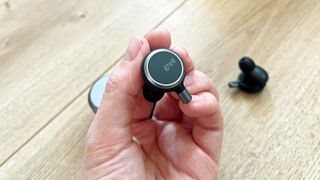
Grell Audio TWS/1: design and features
- Bluetooth 5.2 with extensive codec support
- 10mm full-range drivers
- Active noise-cancelling with ‘noise annoyance reduction’
‘Mildly interesting’ where the design of true wireless in-ear headphones is concerned basically means ‘far more interesting than most’. And thanks to their circular body, extremely brief stem, and nice combination of aluminium in a black-and-grey finish, the TWS/1 are definitely mildly interesting.
They’re also relatively big, mind you, and at 7.3g per earbud they’re also relatively heavy. Thanks to some carefully ergonomic sculpting of the business side of the earbuds, plus a wide selection of foam and silicone eartips, though, the Grell Audio are simple to position securely and comfortably.
The TWS/1 arrive in some eco-credible unbleached packaging, and are stored in an aluminium charging case that both looks and feels good. The earbuds will last for between six and eight hours between charges (depending on whether active noise-cancellation is switched on or off) and the case has another four full charges in it. An all-in battery life of somewhere between 34 and 45 hours is therefore achievable, which is emphatically not to be sniffed at. Charging takes place using either the USB-C input on the case or wirelessly using any Qi-certified pad.
The Grell Audio use Bluetooth 5.2 for wireless connectivity, with support for AAC, aptX Adaptive and LHDC codecs as well as good old-fashioned SBC. Once the audio information is on board, it’s delivered to the listener’s ears via a couple of bespoke 10mm full-range dynamic drivers.
As far as control goes, you’ve a few options. A full suite of voice assistants is available (and I mean full – as well as The Big Three, the TWS/1 are compatible with Bixby and Cortana), and there’s also compatibility with the third-party SoundID control app. Here’s where you can make EQ adjustments, take part in a listening test that helps create a custom EQ setting, get firmware updates and so on. Unlike some alternative designs, though, there’s no facility for adjusting active noise-cancellation beyond ‘off’ or ‘on’.
Each earbud has a capacitive touch-surface too, though they could be more reliable in their responses. Touch-control is available for ‘play/pause’, ‘skip forwards/backwards’, ‘volume up/down’, ‘noise-cancelling on/off/transparency’, ‘answer/end/reject call’ and ‘NAR on/off’. And yes, that last one is worth explaining.
Grell Audio maintains active noise-cancellation is most effective when dealing with low-frequency sound, making mid- and high-frequency sound more prominent as a consequence. Noise Annoyance Reduction constantly scans the frequency spectrum and adapts ANC to keep that annoyance down to a minimum.
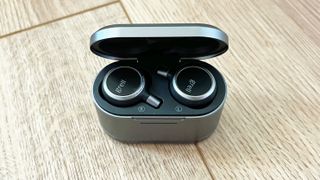
Grell Audio TWS/1: audio performance
- Full-scale, dynamic and involving sound
- Naturalistic tonality
- So-so noise-cancellation
If for no other reason that it’s the shorter of the lists, and by a distance, let’s start with the things the TWS/1 are no better than average at. This won’t take long.
Basically, these earbuds are pretty ordinary when it comes to noise-cancellation – they won't be making our best noise-cancelling earbuds roundup, although they most certainly will join our best earbuds list.
Back to the ANC, though, and they’ll reduce external sound a fair bit, of course, but if you compare them to the real experts where this is concerned (Bose, with its Bose QuietComfort Earbuds, mostly, and also Sony's WF-1000XM4) they’re not all that impressive. And while reducing noise annoyance is a commendable ambition, in practice 'noise annoyance reduction' doesn’t reduce annoyance all that much. Perhaps down to ‘mild irritation’.
But when it comes to actually making music, ‘better than average’ is to understate the TWS/1 ability more than somewhat. Given the highest-quality stuff to work with, such as a TIDAL Masters stream of Jack Harlow’s Come Home the Kids Miss You, the Grell Audio are a convincing and absorbing listen.
Acoustic design: in-ear, true wireless
Weight: 7.3g per earbud
Drivers: 10mm full-range dynamic
Connectivity: Bluetooth 5.2 with support for SBC, AAC, aptX Adaptive and LHDC
Charging: USB-C, Qi-certified wireless support
The soundstage they create is big in every direction, properly organised and easy to understand. Separation is impressive, but so is integration – so the sensation of unity is strong, even when listening to recordings that, like this one, are partly machine- and sample-derived. And as a consequence, proper insight into a recording is available, easily and without impacting on its coherence.
Tonality is nicely judged, impressively even from the top of the frequency range to the bottom, and never less than convincing. Low frequencies are deep, detailed and well controlled, and at the opposite end treble sounds attack crisply. In between, there’s more than enough detail available to make a singer’s emotion and intention plain.
Switching to Give Me Daughters by Jonathan Fire*Eater allows the TWS/1 to showcase their dynamic potency, energy and rhythmic certainty. As far as combining out-and-out punch with unarguable control, the Grell Audio are as good as anything around. They don’t over- or understate any area of the frequency range, they offer uncolored tonality and they seem to authentically enjoy all your favourite music. So unless you give as much weight to noise-cancellation as to sound-production, the TWS/1 deserve serious consideration.
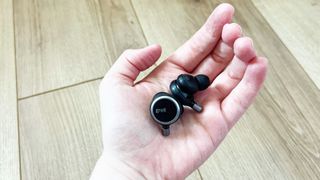
Should I buy the Grell Audio TWS/1?
Buy them if…
You like unequivocal sound
The TWS/1 are about as explicit as earbuds get.
You like to go your own way
The TWS/1 are a nice alternative to Bose, Sony et al.
You’re always out and about
Battery life is considerable.
Don't buy them if…
External sounds grate on you
The TWS/1 are ‘good’ rather than ‘great’ where ANC is concerned.
You’re touchy-feely
More reliable touch-controls exist than these.
You favour a slim fit
The charging case is too big to sit happily in a trouser pocket.
Also consider
Think the Grell Audio TWS/1 in-ear wireless headphones might not be the best true wireless earbuds for you? That's just fine – it's good to look around! Here are three alternative options that might offer just the combination of portability and sound quality you're looking for.
<a href="https://www.techradar.com/uk/reviews/nuratrue" data-link-merchant="techradar.com"">NuraTrue
The NuraTrue are a fantastic pair of wireless earbuds, with the level of customization on offer unrivaled. An excellent audio performance, noise cancellation, and an IPX4 water-resistance rating only sweeten the deal.
<a href="https://www.techradar.com/uk/reviews/sony-wf-1000xm4-wireless-earbuds" data-link-merchant="techradar.com"">Sony WF-1000XM4
Sony is largely responsible for the rude health of the active noise-cancelling true wireless in-ear headphones market, and with the WF-1000XM4, the company has combined performance, ergonomics, and build quality more effectively than ever before. They’re not perfect, but as an overall package they’re hard to beat.
<a href="https://www.techradar.com/uk/reviews/lypertek-pureplay-z3-20-review" data-link-merchant="techradar.com"">Lypertek PurePlay Z3 2.0
Lypertek continues to punch above its weight and outside of its pricing bracket with the PurePlay Z3 2.0 true wireless earbuds, a stellar-sounding package with top-notch battery life.
Simon Lucas is a senior editorial professional with deep experience of print/digital publishing and the consumer electronics landscape. Based in Brighton, Simon worked at TechRadar's sister site What HiFi? for a number of years, as both a features editor and a digital editor, before embarking on a career in freelance consultancy, content creation, and journalism for some of the biggest brands and publications in the world.
With enormous expertise in all things home entertainment, Simon reviews everything from turntables to soundbars for TechRadar, and also likes to dip his toes into longform features and buying guides. His bylines include GQ, The Guardian, Hi-Fi+, Metro, The Observer, Pocket Lint, Shortlist, Stuff T3, Tom's Guide, Trusted Reviews, and more.
